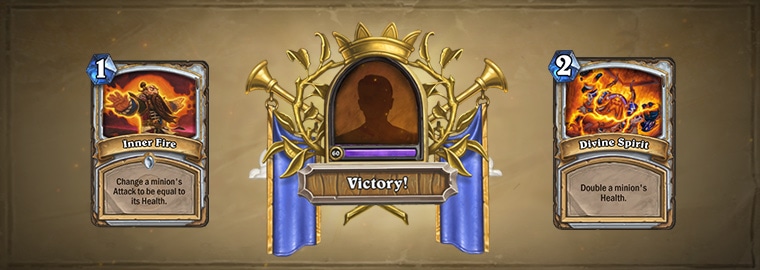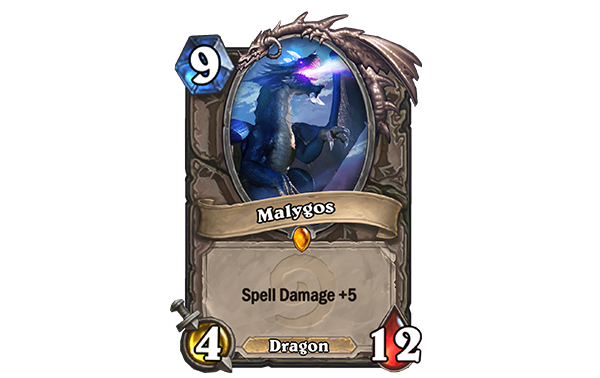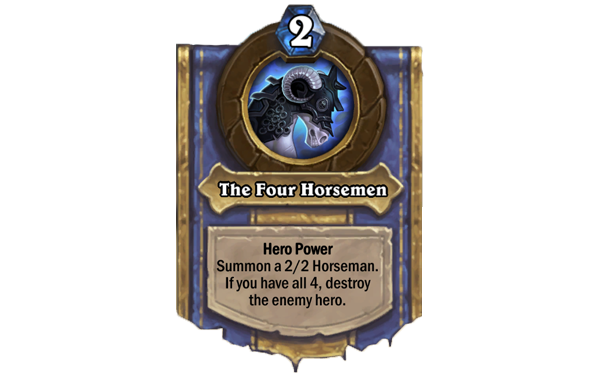
Early this year, we kicked off our Opening Moves series, where we took a closer look at the early game of competitive Hearthstone. We followed up in July with Midgame Moves. This week, to celebrate the end of the year, we’re bringing you Endgame Moves. Today, explore the similarities and differences between popular combo decks.
Combo decks are slower archetypes that require finding a few key cards before pulling off one massive turn that either kills the opponent, leaves them clinging on by a few health, or restricts them until they concede or perish. To get a sense of how these decks operate in—and survive until—the late game, we spoke to seasoned Hearthstone veteran Anthony "Ant" Trevino to talk through three of his favorites.
Togwaggle Druid
The idea here is to switch decks with your opponent with King Togwaggle, which gives your opponent a ransom card that could (theoretically) allow them to switch the decks back. But before this happens, the deck plays Azalina Soulthief, which grants you a copy of your opponent’s hand (including the ransom), so you can claim your opponent’s deck once and for all!
“Essentially you want to cycle through your deck as fast as possible,” said Ant. “A lot of players either use Twig of the World Tree or Dreampetal Florist to allow you to play Azalina Soulthief and King Togwaggle in the same turn. I think this is my favorite big combo deck; it feels rewarding when you get to take your opponent’s cards and they can’t really do anything about it!”
Malygos Druid

Malygos, a legendary neutral minion that gives +5 Spell Damage, is a big combo deck staple that has long had a place in the competitive meta. “Malygos Druid has the big finish of Malygos, Moonfires, and Swipe,” Ant said. “That normal combo is still dirty! Although depending on the list, they can run Faceless Manipulator or Flobbidinous Floop as well.”
One-Turn Kill (OTK) Paladin

OTK Paladin uses the Hero Power granted by Uther of the Ebon Blade to (eventually) summon The Four Horsemen, instantly destroying the enemy Hero.

“A lot of the time control Paladin [decks] don’t have a lot of good finishing moves,” said Ant. “For this one, you would Hero Power after playing Uther of the Ebon Blade before bouncing the Horsemen back to your hand with Youthful Brewmaster or Ancient Brewmaster. When you have three in your hand, you can play all of them out and Hero Power for the last one. You still try and cycle as fast as possible, but it has a lot of control elements like good board clear with Equality and Consecration or Pyromancer.”
On Mulligans
For all of these big combo decks, one of the most important things about the endgame is ensuring you get there. As such, when mulliganing with decks like these, you must understand the matchup, and adjust accordingly. If you think your opponent is on a control deck, you’re usually fine to dig for combo pieces. If you’re playing against aggro, consider holding onto (or searching for) removal.
“Just try and get yourself those extra turns for setup,” said Ant, adding that many combo decks are built with this in mind: Spreading Plague for Druid, Pyromancer for Priest, Time Out for Paladin, and so on.
Be OK with Losing
Combo decks are notoriously hard to pilot, and there are many ways in which a less experienced player can make a game-ending mistake—so just recognize that this is part of the learning curve. “It's possible you'll lose a lot when you play combo decks,” said Ant. “It's OK to lose while you're trying to understand the deck. Usually once you get a better grasp, you'll actually start to see a lot more success.”

Thanks Ant! We hope this story has inspired you to dabble in combo decks in Hearthstone, if you don’t already. Return tomorrow for a special Well Played video edition of Endgame Moves!

Join the Conversation